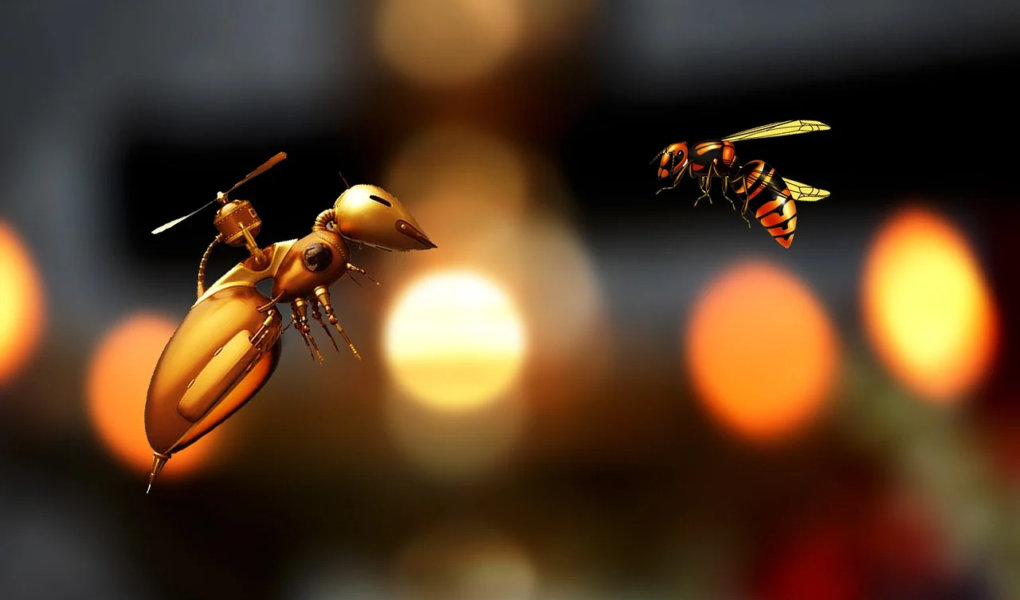Since the early 2000s, a mysterious phenomenon known as colony collapse disorder (CCD) has become increasingly common among commercial honeybee colonies. Beekeepers have observed colonies where overwhelming majorities of worker bees unexpectedly disappeared. CCD has only become more common in recent years, posing serious threats to the agricultural industry as honeybee colonies continue to collapse, making it harder for farmers to pollinate their crops.
However, it may be possible to overcome the challenges posed by CCD using robotic pollinators. As their name suggests, robotic pollinators are computerized machines designed to perform the work of organic pollinators like honeybees. Robotic pollinators may soon start pollinating crops on a large scale, allowing farmers to adapt to the conditions imposed by rapidly declining bee populations.
What Is Colony Collapse Disorder?
Although sudden honeybee colony collapses have been observed for over a century, colony collapse disorder has become more common in the early 21st century. In 2022, the Bee Informed Partnership (BIP), a nonprofit organization that seeks to improve the health of honeybees in the United States, reported that U.S. beekeepers lost an average of 48.2% of their honeybee colonies from April 2022 to April 2023. This figure was much higher than the maximum acceptable honeybee colony loss rate of 20%.
A decrease in the number and average age of worker bees in a colony is a common symptom of CCD. In some cases, however, seemingly healthy honeybee colonies may experience CCD without displaying any clear symptoms before it is too late to save the colony. Queen bees and young female worker bees typically survive the early stages of CCD, but as colony conditions worsen, the entire population of adult bees may disappear.
The exact causes of CCD are poorly understood, but scientists believe that certain human activities may be linked to the increased frequency of CCD. Toxins found in man-made pesticides and fertilizers can leak into the environment during agricultural processes. These toxins can be deadly to honeybees and are thought to be a major cause of CCD. Invasive pathogens can also lead to CCD. For example, varroa mites, a species of mite that causes deadly viral infections among honeybees, originated in Asia but were later accidentally transported to Europe, Africa, and the Americas by humans. Today, varroa mites are often thought to cause CCD among honeybee colonies.
The widespread collapse of honeybee colonies will have catastrophic effects on U.S. agriculture. Commercial honeybees pollinate about $15 billion worth of food crops in the United States every year, and U.S. farmers use honeybees to pollinate about 90 different crop species. A lack of access to commercial honeybees will decrease yields and revenues for crop growers.
How Are Robotic Pollinators Used Today?
As colony collapse disorder becomes more common among honeybee populations, farmers will look to other means of pollinating their crops, including robotic pollinators. Some researchers have begun to develop tiny robots about the size of an actual bee that use “artificial muscles” to fly between crops that need to be pollinated. Current robotic pollinators, however, are generally much larger but nonetheless utilize pollination methods inspired by real-life bees.
BloomX is an Israeli startup that uses artificial intelligence to create robotic pollinators resembling lawn mowers. The robotic pollinators can pollinate crops by applying an electric charge to collect pollen from one plant and deliver it to another, like a honeybee. They can also produce vibrations at the base of a plant to initiate the release of pollen particles, like a bumblebee. BloomX’s robotic pollinators are already being used to pollinate avocados and blueberries.
Bluewhite Robotics has developed autonomous drones that can pollinate apple trees and date palms in Israel along with almond orchards in California. The drones can directly deliver pollen to the stigmata of flowers, thereby pollinating the flowers and allowing them to produce edible fruits. The company’s software platform lets farmers control a large fleet of these pollinator drones from a distance using a highly intuitive user interface.
Arugga has built robotic platforms that can pollinate crops grown in greenhouses. Powered by artificial intelligence, these platforms deliver a buzz resembling the sound of a bumblebee in order to initiate the dispersal of pollen by crops. Arugga’s commercial pollination robots are already being used by food growers in Australia, Finland, and the United States.
Advantages of Robotic Pollinators
Robotic pollinators can improve agricultural productivity beyond the limits of natural pollinators like bees. For example, farmers who use BloomX’s robotic pollinators that resemble lawn mowers can see their crop yields by up to 30 percent. Some robotic pollinators are also equipped with cameras and computer vision that allow for the collection of data on crops.
Robotic pollinators are especially helpful when it comes to cultivating crops in greenhouses, which generally do not have access to wild pollinators. However, since robotic pollinators do not transfer pests or diseases to crops, it is possible to use them to boost crop yields in greenhouses.
Robotic pollinators are also not limited by environmental factors. While actual honeybees only thrive at relatively warm temperatures, robotic pollinators can perform their jobs even in the midst of comparatively cool temperatures.
Disadvantages of Robotic Pollinators
Some experts have worried that robotic pollinators may pose a threat to the environment. For example, tiny robotic pollinators resembling actual bees may break down in the middle of their flight, leading to the release of toxic lithium and heavy metals into the environment. These metals can hurt birds, mammals, plants, and other fauna and flora.
Robotic pollinators can also lead to a decrease in biodiversity. Unlike actual bees, robotic pollinators are programmed to only pollinate crops while ignoring wild plants. By replacing organic bees with robotic pollinators, food producers would deprive wild plants of access to pollinators, causing the wild plants to reproduce less, which ultimately decreases plant biodiversity.
However, given the increasing frequency of colony collapse disorder and the resulting decrease in honeybee populations, it may be wise to increase the use of robotic pollinators. The advantages of increased crop yields and a more robust food supply outweigh the potential downsides of robotic pollinators.
Robotic pollinators will play an increasingly important role in 21st-century agriculture, especially as honeybee colonies continue to collapse en masse. Startups throughout the world are racing to develop a wide range of computerized machines that can pollinate crops, from tiny insect-like drones to large autonomous vehicles. Farmers will benefit from the availability of more productive and dependable means of pollinating their crops, while consumers will benefit from a more abundant, robust, and reliable food supply.




